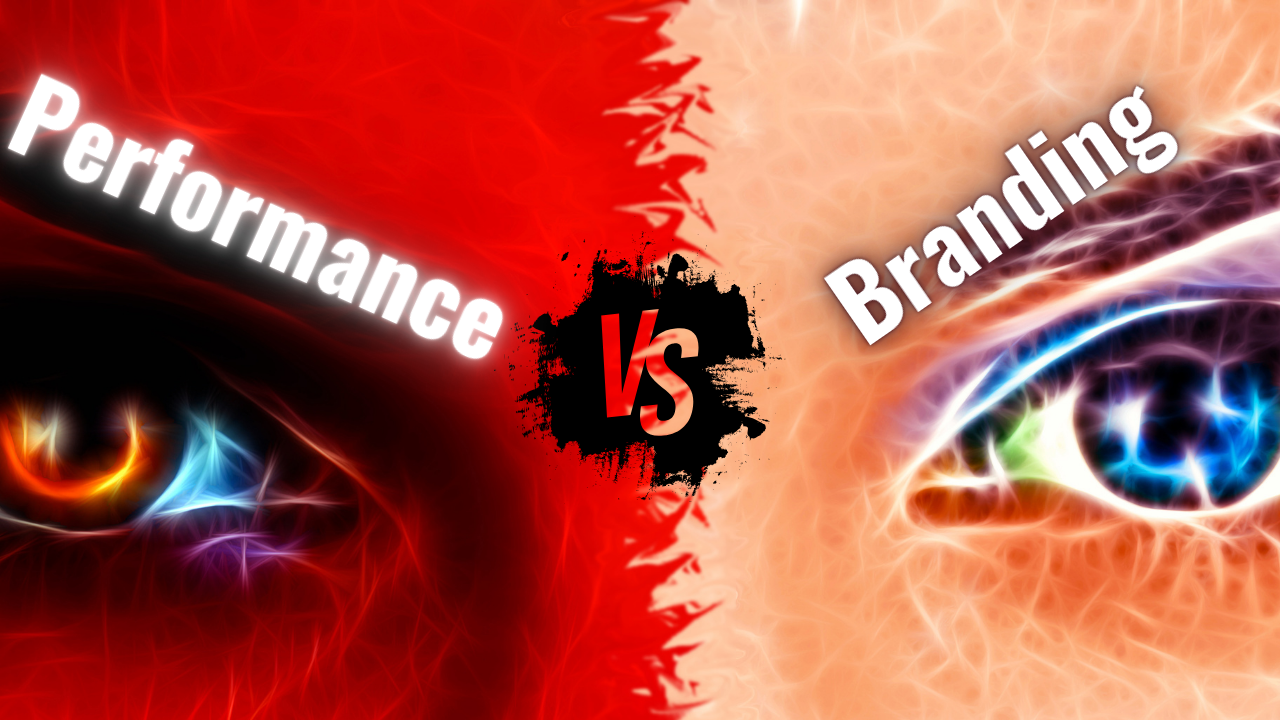
Performance marketing and branding are crucial aspects of marketing, with performance marketing being a direct, results-driven approach and branding being a salaried employee. Understanding the target audience is essential for both strategies, as local or nationwide audiences may require a more cost-effective approach. Influencer marketing is a powerful tool for branding, aiming to create buzz around the brand. The Four Pillars of Branding include strategic, visual, messaging, and awareness, which help create a strong brand that resonates with the target audience. Achieving the right balance between performance and branding is essential for business growth.
The Power of Performance and Branding in Marketing
Marketing is a vast field with numerous strategies and techniques. It’s divided into two main parts: performance and branding. Understanding these two aspects can significantly impact your business growth.
Performance vs Branding

Performance marketing is like having a salesman. You tell them, “If you sell one product, you’ll get Rs. 100. If you sell 1000 products, you earn money. If you don’t sell, I won’t give you money.” It’s a direct, results-driven approach.
On the other hand, branding is like having a salaried employee. Their job is to meet people, create awareness about your brand, and build relationships. It doesn’t matter if they sell or not.
A successful business is built on a mixture of both performance and branding.
The Role of Influencer Marketing
Influencer marketing is a powerful tool for branding. Brands often collaborate with influencers to talk about their products or services within a specific timeframe. This strategy aims to create a buzz around the brand, making people curious about what it offers.
The Importance of Target Audience
Whether you’re doing performance marketing or branding, understanding your target audience is crucial. If your target audience is local, branding might be more cost-effective. However, if your target audience is nationwide, performance marketing might be a better option due to budget constraints.
The Four Pillars of Branding

Branding rests on four major pillars: strategic, visual, messaging, and awareness.
- Strategic: This involves the company’s mission, values, and overall strategy.
- Visual: This includes the visual elements that represent the brand.
- Messaging: This refers to the communication aspect of the brand.
- Awareness: This involves making people aware of the brand.
- Understanding these pillars can help create a strong brand that resonates with your target audience.
Conclusion
Whether you’re just starting or have been in business for a while, understanding the power of performance and branding in marketing can help drive your business growth. Remember, it’s not about choosing one over the other; it’s about finding the right balance between performance and branding that works best for your business.
The Strategic Pillar of Branding
The strategic pillar of branding is intrinsic and often invisible to the customer, but it governs the entire company. It’s the foundation, the “NEEV,” upon which a business is built. This pillar encompasses the company’s values, purpose, mission, and vision.
Values: The Ethics of Business
Values define what’s right and wrong for a business. They form the ethical framework within which the company operates. Being honest, for instance, is a value that many companies uphold. It’s about being transparent with your customers and stakeholders, even if it means admitting mistakes or shortcomings.
Purpose: The ‘Why’ of Business
The purpose answers the question, “Why are we doing what we are doing?” It’s the driving force behind every action and decision in the business. For example, a company might have a purpose to generate individuals who can earn a significant income each month.
Mission: The ‘What’ of Business
The mission statement outlines what the company wants to achieve. It should ideally be quantifiable and time-bound. However, it’s important to note that missions can change over time as businesses evolve and pivot.
Vision: The ‘How’ of Business
While the mission explains what a company wants to achieve, the vision describes how it plans to achieve those goals. For instance, a company might have a vision to make earning an income more accessible by providing comprehensive digital marketing courses.
The Evolution of Business Goals: Mission and Vision
Business goals, encapsulated in the mission and vision statements, are not set in stone. They evolve as the business grows and adapts to the changing market dynamics.
Mission: The Evolving Goal
A mission statement outlines what a company wants to achieve. It’s the goal that drives every action and decision in the business. For instance, a company might start with a mission to generate individuals who can earn a significant income each month. However, as the business evolves, this mission can change.
The mission should ideally be quantifiable and time-bound, but it’s important to remember that it can change over time. Businesses pivot, and with each pivot, the mission can change. This is a natural part of business evolution.
Vision: The Changing Path
While the mission explains what a company wants to achieve, the vision describes how it plans to achieve those goals. A vision can change as the business grows and explores new opportunities.
For example, a company might start with a vision to make earning an income more accessible by providing comprehensive digital marketing courses. But as it grows and expands its offerings, this vision might evolve to include creating a one-stop platform for all financial needs.
Values: The Constant Guide
While missions and visions may change, values often remain constant. They form the ethical framework within which the company operates. Being honest, for instance, is a value that many companies uphold. It’s about being transparent with your customers and stakeholders, even if it means admitting mistakes or shortcomings.
Visual, Messaging, and Awareness: The Other Pillars of Branding
Apart from the strategic pillar, there are three other crucial pillars of branding: visual, messaging, and awareness.
Visual: The Look of the Brand
The visual aspect of a brand includes its logo, typography, colors, and images. These elements play a significant role in how the brand is perceived. For instance, a brand might use specific colors to convey certain emotions or values.
Messaging: The Voice of the Brand
Messaging involves the communication aspect of the brand. It includes the brand’s personality, voice tone, tagline, and value proposition.
- Personality: Every brand has its personality. It’s like assigning human characteristics to a brand. This personality influences how the brand communicates with its audience.
- Voice and Tone: This refers to how a brand communicates with its audience. It could be authoritative, creative, fun, or any other tone that aligns with the brand’s personality.
- Tagline: A tagline is a memorable phrase that encapsulates what the brand does or stands for.
- Value Proposition: This is what sets a brand apart from its competitors. It’s about what value the brand offers to its customers and how it can make a difference in their lives.
Awareness: The Perception of the Brand
Awareness involves making people aware of the brand and creating a perceived value. Perceived value is a marketing term that refers to the value that a product or service is believed to have in the minds of consumers.
The Impact of Perceived Value and Consistent Messaging in Marketing
Perceived value is a powerful concept in marketing. It refers to the value that a product or service is believed to have in the minds of consumers. This value can vary significantly among different consumers based on their circumstances and needs.
For instance, consider a digital marketing course priced at 10k. A college student from a well-off family, a village boy whose father is a farmer, and a business owner earning 10 crores per month might perceive the value of this course differently. If the course increases their sales rate by just 1%, the business owner might see a significant increase in their income, thus perceiving the course as highly valuable. On the other hand, the farmer might not see such a big impact, leading to a lower perceived value.
This highlights the importance of targeting in marketing. Knowing your audience and tailoring your messaging to their specific needs can significantly enhance the perceived value of your product or service.
Another crucial aspect of marketing is consistent messaging. When launching a campaign, it’s essential to maintain consistent messaging for a specific audience. For example, if Apple launches a new product, they would center their campaign around that product. They wouldn’t mix messages about different products as it could confuse the audience and dilute the impact of their campaign.
In conclusion, understanding and leveraging perceived value and consistent messaging can significantly enhance your marketing efforts and drive business growth.
Read more: Demand in Marketing: What You Need to Know
how brand building and performance marketing can work together
Performance marketing and brand building are two distinct marketing strategies that can be combined to achieve better results. The brand building focuses on creating a lasting impression of a brand in consumers’ minds, while performance marketing focuses on driving measurable results like leads, sales, and website traffic. By combining these strategies, companies can improve their marketing strategies, reach new customers, and build brand awareness. For example, a clothing company could use brand-building campaigns to establish its brand as fashionable and affordable, while performance marketing campaigns could target consumers interested in fashion and software solutions. Despite their different investments and timelines, integrating both strategies can lead to a more balanced and effective marketing strategy. To optimize campaigns, companies should align brand messaging across all channels, use performance marketing data to inform brand-building campaigns, and track results to optimize campaigns over time.
Sure, here’s your content in brief bullet points:
– Brand building and performance marketing are two different marketing strategies, but they can work together to achieve better results.
– The brand building is focused on creating a strong, lasting impression of a brand in the minds of consumers.
– Performance marketing is focused on driving measurable results, such as leads, sales, and website traffic.
Here are some ways that brand building and performance marketing can work together:
1. Brand building can lay the foundation for successful performance marketing campaigns.
2. Performance marketing can help to amplify brand awareness and reach new customers.
3. Brand building can help to improve the performance of performance marketing campaigns.
Specific examples:
– A company that sells clothing could use brand-building campaigns to create a strong image of its brand as being fashionable and affordable.
– A company that sells software could use brand-building campaigns to establish its brand as a leader in its industry and to highlight the benefits of its software.
Tips for integrating brand building and performance marketing:
1. Align your brand messaging across all of your marketing channels.
2. Use performance marketing data to inform your brand-building campaigns.
3. Track the results of both your brand-building and performance marketing campaigns so that you can see what is working and what is not.
By integrating brand building and performance marketing, companies can create a more effective marketing strategy that will help them achieve their business goals.
Performance marketing and brand marketing are key strategies in generating leads and sales. Performance marketing provides insights into user engagement, while brand marketing aims to change preferences and establish brand equity. Balancing these strategies is crucial for long-term growth. Metrics like conversion rate, cost per lead, customer lifetime value, and ROI help measure marketing effectiveness.
- Performance Marketing: This strategy is used to generate quick leads and sales, providing insights into the most engaged users.
- Brand Marketing: This strategy aims to change preferences and habits over the long term, establishing valuable brand equity.
Performance marketing does in reality have the power to change brand strategy by providing insights on the most devoted users. Data from performance campaigns can be used by brand marketers to increase the efficiency and precision of their advertising.
Finding a healthy balance between brand marketing and performance marketing can lead to long-term growth and success. A company’s potential to grow may be hindered by a sole concentration on performance marketing.
The metrics you mentioned for measuring marketing performance are spot on:
- Return on investment (ROI)
- Customer lifetime value (CLV)
- Mobile leads, traffic, and conversion rates
- Conversion rate
- Cost per lead (CPL)
These metrics provide valuable insights into the effectiveness of marketing efforts and help in making informed decisions for future strategies.
Read More: Performance Marketing Fundamentals
What are some tips on how to write engaging content?
To create engaging content, use headers and sub-headers to keep your content organized. Be concise and use graphics to convey ideas easily. Use lists to provide immediate information without extensive text. Include a call to action for readers to take action. Edit your work for grammar, punctuation, and spelling errors. Write for your audience’s needs and tell a story to keep readers guessing. Be clear and concise to ensure clarity. The key is to create content that adds value, gets readers hooked, and provides a new perspective on a topic.
Here are some pointers on how to create interesting content:
- Use Headers and Sub-headers: Headers and sub-headers capture the attention of your readers and help to keep your content organized.
- Be Concise: Keep your information brief, to the point, and to the point. Overwhelming information can be tedious and difficult to comprehend.
- Use Graphics: Graphics, such as photographs, movies, or charts and graphs, can improve customer engagement and convey an idea considerably more effectively than text.
- Use Lists: Lists are appealing to readers because they are simple to follow and comprehend. They deliver immediate information without requiring the reader to read enormous quantities of material.
- Include a Call to Action: Include a call to action in every piece of content you create. Tell the readers what you want them to do, and give them the appropriate tools to do so.
- Edit Your Work: A poor editor can damage even the best-written material. Check for spelling, grammar, and punctuation mistakes as well as more inventive or superior methods to express ideas and construct sentences.
- Write for Your Audience: If you want to hold the attention of your readers, you must write to meet their demands. Ensure that your content is specifically tailored to your audience.
- Tell a Story: Story-telling writing that keeps the reader guessing makes for some of the most interesting stuff.
- Be Clear: Information should be presented in a manner that is unambiguous, clear, and simple to understand.
The objective, as always, is to produce information that readers find valuable, keeps them interested, inspires them to rethink what they’ve learned, or offers a fresh take on a subject.

